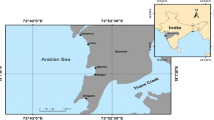Abstract
In addition to diet-based vectors of disease, the contribution of water-borne zoonotic agents to gastrointestinal illnesses may be significant, but this has yet to be investigated for Cyprus. Our main objective was to evaluate antibiotic resistance patterns of Salmonella and Escherichia coli in groundwater samples collected at confined animal feeding operations. This is the first report on the occurrence of antibiotic-resistant Salmonella and E. coli strains in the groundwater of Cyprus. Most of Salmonella isolates belonged to the subgroup enterica, whereas none of the E. coli isolates expressed the verotoxin-encoding gene. Out of 27 isolated Salmonella strains, nearly half of them were resistant to at least one or more antibiotic, whereas the highest resistance was exhibited by sulphamethoxazole (85%), followed by streptomycin (39%), and tetracycline (31%). For the E. coli isolates, nearly a third of them showed resistance to at least one antibiotic, whereas the selection of antibiotic resistance was equal among sulphamethoxazole, tetracycline and streptomycin (20%). This study demonstrated that Salmonella and E. coli in groundwater could pose a public health risk via oral ingestion of contaminated water. Best management practices are needed for overexploited groundwater supplies of rural areas, minimizing human exposure to antibiotic-resistant pathogens.

Similar content being viewed by others
References
Anderson, E. M., & Sobsey, D. M. (2006). Detection and occurrence of antimicrobially resistant E. coli in groundwater on or near swine farms in eastern North Carolina. Water Science and Technology, 54, 211.
Anonymous. (2009). Annual report on zoonoses in Denmark 2008, National Food Institute, Technical University of Denmark.
Chiu, C. H., & Ou, T. J. (1996). Rapid identification of Salmonella serovars in feces by specific detection of virulence genes, invA and spvC, by an enrichment broth culture-multiplex PCR combination assay. Journal of Clinical Microbiology, 34, 2619.
Clinical and Laboratory Standards Institute (CLSI). (2009). Performance standards for antimicrobial susceptibility testing; nineteenth informational supplement. CLSI, Vol. 29, No. 3, M100-S19, ISBN 1-56238-690-5.
Community Reference Laboratory for E. coli (CRL-VTEC). (2008). Identification and characterisation of verocytotoxin-producing Escherichia coli (VTEC) by PCR amplification of virulence genes. CRL_Method 01 Apr 28, 2008. http://www.iss.it/binary/vtec/cont/VTEC_PCR_ring08.pdf.
Elmund, G. K., Morrison, S. M., Grant, D. W., & Nevins, M. P., Sr. (1971). Role of excreted chlortetracycline in modifying the decomposition process in feedlot waste. Bulletin Environmental Toxicology, 6, 129.
European Centre for Disease Prevention and Control (ECDC). (2009). Annual epidemiological report on communicable diseases in Europe. Stockholm, ECDC, 2009.
European Commission. (2003). Regulation 1831/2003 of the European Parliament and of the Council of Sept 22, 2003 on additives for use in animal nutrition. Official Journal of the European Union, L268/29.
European Commission. (2007). Decision 2007/516/EC of July 19, 2007 concerning a financial contribution from the community towards a survey on the prevalence and antimicrobial resistance of Campylobacter spp. in broiler flocks and on the prevalence of Campylobacter spp. and Salmonella spp. in broiler carcasses to be carried out in the Member States. Official Journal of the European Union, L190/25.
European Food Safety Authority (EFSA). (2007). Report of the task force on zoonoses data collection including a proposal for a harmonized monitoring scheme of antimicrobial resistance in Salmonella in fowl (Gallus gallus), turkeys, and pigs and Campylobacter jejuni and Campylobacter coli in broilers. The EFSA Journal, 96, 1–46.
ISO. (2000). Water quality—Detection and enumeration of Escherichia coli and coliform bacteria—Part 1: Membrane filtration method. ISO 9308-1. International Organization for Standardization, Geneva, Switzerland.
ISO. (2002). Microbiology of food and animal feeding stuffs—Horizontal method for the detection of Salmonella spp. ΙSO 6579. International Organization for Standardization, Geneva, Switzerland.
Kümmerer, K. (2004). Resistance in the environment. Journal of Antimicrobial Chemotherapy, 54, 311.
McKeon, M. D., Calabrese, P. J., & Bissonnette, K. G. (1995). Antibiotic resistant gram-negative bacteria in rural groundwater supplies. Water Research, 29, 1902.
Papachristoforou, C., & Markou, M. (2006). Overview of the economic and social importance of the livestock sector in Cyprus with particular reference to sheep and goats. Small Ruminant Research, 62, 193.
Paton, A. W., & Paton, J. C. (1998). Detection and characterisation of Shiga toxigenic Escherichia coli by using multiplex PCR assays for stx1, stx2, eaeA, enterohemorrhagic E. coli hlyA, rfbO111, and rfbO157. Journal of Clinical Microbiology, 36, 598.
Rabsch, W., Tscäpe, H., & Bäumler, J. A. (2001). Non-typhoidal salmonellosis: Emerging problems. Microbes and Infection, 3, 237.
Sapkota, R. A., Curriero, C. F., Gibson, E. K., & Schwab, J. K. (2007). Antibiotic-resistant enterococci and fecal indicators in surface water and groundwater impacted by a concentrated swine feeding operation. Environmental Health Perspectives, 115, 1040.
Sarmah, K. A., Meyer, T. M., & Boxall, B. A. A. (2006). A global perspective on the use, sales, exposure pathways, occurrence, fate and effects of veterinary antibiotics in the environment. Chemosphere, 65, 725.
Teuber, M. (2001). Veterinary use and antibiotic resistance. Current Opinion in Microbiology, 4, 493.
White-Kauffmann-Le Minor Scheme. (2007). Antigenic formulae of the Salmonella serovars. 9th edn., WHO Collaborating Centre for Reference and Research on Salmonella.
Author information
Authors and Affiliations
Corresponding author
Additional information
Constantinos Economides and Maria Liapi contributed equally to this study.
Rights and permissions
About this article
Cite this article
Economides, C., Liapi, M. & Makris, K.C. Antibiotic resistance patterns of Salmonella and Escherichia coli in the groundwater of Cyprus. Environ Geochem Health 34, 391–397 (2012). https://doi.org/10.1007/s10653-012-9450-6
Received:
Accepted:
Published:
Issue Date:
DOI: https://doi.org/10.1007/s10653-012-9450-6




